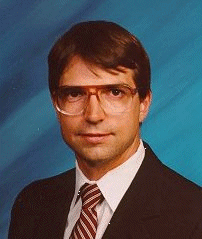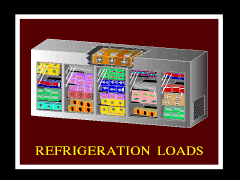REFRIGERATION CONTRACTOR INCREASES SALES WITH COMPUTERIZATION©
by Bill Smith, president of Elite Software

 While computerization continues to play an ever important role in the success of many HVAC companies, refrigeration firms have not enjoyed similar benefits mostly because of a lack of refrigeration specific software. But recently, refrigeration software has become more available and the Greer Company of La Vergne, Tennessee has experienced a wealth of benefits afforded by such computerization.
While computerization continues to play an ever important role in the success of many HVAC companies, refrigeration firms have not enjoyed similar benefits mostly because of a lack of refrigeration specific software. But recently, refrigeration software has become more available and the Greer Company of La Vergne, Tennessee has experienced a wealth of benefits afforded by such computerization.
The Greer Company is a design/build "turnkey" refrigeration systems and  controls contractor as well as a distributor of virtually all kinds of ammonia refrigeration equipment. Projects range from $50,000 to $750,000 and the company employs ten service engineers who work on projects throughout the U.S. During its thirty-five years of business, the firm has also worked on many far flung projects such as an ice cream plant in Egypt, a frozen juice plant in Ecuador, multiple plant maintenance in Australia, and even huge U.S. Air Force refrigeration jobs during the Vietnam war.
controls contractor as well as a distributor of virtually all kinds of ammonia refrigeration equipment. Projects range from $50,000 to $750,000 and the company employs ten service engineers who work on projects throughout the U.S. During its thirty-five years of business, the firm has also worked on many far flung projects such as an ice cream plant in Egypt, a frozen juice plant in Ecuador, multiple plant maintenance in Australia, and even huge U.S. Air Force refrigeration jobs during the Vietnam war.
Harold "Wally" Greer is the CEO and he recalls what his work was like before he took the step up to full computerization. He remembers, "During the preliminary design process we would end up with many loose notes from plant visits and discussions with the client. Often, these important notes would get lost and we have to do the work of gathering the information a second time. Plus, we didn't have an efficient way to organize the whole process. But the worst part was taking all of our loose notes and sitting down with our ASHRAE books and a calculator to manually figure out the design. A typical job of 800 to 1,000 tons of refrigeration meant a lot of time consuming and labor intensive calculations along with all the equipment selections. We had to figure out the loads and the equipment to handle them and make the system energy efficient while being cost effective for the owner."
"Furthermore, after we'd spent enormous amounts of time on the design the customer invariably wanted to make a change such as a different wall or floor insulation thickness. They would sometimes even change the size of the refrigerated room, especially if it was new construction. Of course, this would throw all of our calculations off and required that we go through the whole process of completely recalculating our figures."
Unlike HVAC work, Greer emphasizes that refrigeration concerns products and foods. "It's a lot of work to look up the heat properties for apples, tomatoes, pears, etc. They are all different and it often takes a week, or more, of tedious manual work to design the system that we want."
Naturally, Greer looked at shortcuts such as using rule of thumb calculations to cut design time. But through hard experience Greer found that using rules of thumb could result in under designed jobs with insufficient capacity or more often, grossly over designed jobs that were too expensive. He adds, "Even using rules of thumb, good designs still took a lot of time because everything had to be checked so carefully."
Greer's decision to computerize the process came on a job that required three full weeks of slow, manual effort to calculate. He recalls, "We'd get it done and on Friday, they'd call me and make a change. This meant I would have to work all weekend to redo the calculations and retype all of our quotations. At this point I purchased Elite Software's REFRIG program for calculating refrigeration box loads. I wanted to see how it worked so I took an entire week's figures and entered them into the program. Within minutes, the loads came out exactly as those I spent a week calculating manually. The client went on to make five or six changes before we were done with that job. REFRIG could recalculate in minutes what used to take a weekend of hand calculations. It was simply that dramatic."
He remembers another job where computerization had an important payoff. "Not long ago we bid on a job in the midwest with eight other competitors. This job had nine separate refrigeration rooms. With the REFRIG were able to quickly generate fifteen pages of reports that showed two different design scenarios for each of the nine rooms. We were the only contractor who could do this. Without the program, the time required to do it manually would've been prohibitive. Our design knocked off two 3,700 cfm machines and as a result, we saved our client over $100,000. In the end, we got the job based on the lowest bid and the lowest brake horsepower per ton of refrigeration. REFRIG'S speed and accuracy made all the difference."

Greer observes most of their jobs involve converting freon equipment to ammonia. In their work, Greer strives to design refrigeration systems that are exceptionally energy efficient. He notes that bigger systems are not necessarily better. "Excessive short cycling from over designed systems will bring the temperature of the room down too quickly without taking the heat out of the product. In addition, if you snap a freezer down to quickly you'll buckle floors and walls and have a catastrophe on your hands - slow and steady cooling is the secret. REFRIG helps us design systems with smaller motors and compressors that will run on a minimum of energy while increasing their service life and result in much lower lifetime utility bills for our clients. For example, on one job, my price was over three times higher than my competitor's bid. But I was able to show the client that he would payback his investment in only two and a half years based on energy savings. After that, it took only fifteen minutes for the client to sign a contract. In fact, we later learned that the client recovered his investment in only 2 years."
Greer has further streamlined the design process by using REFRIG on his portable laptop computer. He explains, "The best part is that I can now actually enter data as I walk through the plant. Then, if the client makes a change I can enter it in the computer on the spot. The program also serves as a checklist so I don't forget anything. And with my portable printer, I can give the customer a quotation right in his office. I complete my work even before I leave the plant. All the data entry is done and stored in the computer where it can't get lost. The computer keeps it all together so you know exactly what the results were computed on. I'm accomplishing about four to five times more work than I used to, and I get Saturdays and Sundays free. It's truly been amazing."
He has also sampled free programs available from equipment manufacturers, but found them lacking. "They were too basic, inflexible and tended to promote one manufacturer's equipment only. One program would constantly "lock up" and I could never use it. Many of these programs were designed around glorified air conditioning equipment which didn't fit my applications at all. Worse yet, there was no backup or support on those programs. REFRIG, on the other hand, is specifically designed for refrigeration applications and it is very well supported by Elite Software's friendly staff. (Steve, we don't want to say REFRIG is just for foods as many people use it on medical products such as blood and plasma). Furthermore, REFRIG has built-in equipment data on all the major manufacturers not just one. As with most things, you get what you pay for. And with REFRIG, the program paid for itself on the first job. It's been the best software investment we have ever made. We are always confident in it's results."
The Greer Company plans more computerization to further increase productivity and profitability. Greer explains, "With computers, we've reduced our administrative staff from five to two people; we do everything faster and more efficiently and have significantly cut our paperwork. We're now using AutoCAD for our basic refrigeration layouts. We're even monitoring more and more of our plants with on-site computers which call our office and tell us of potential problems. We know about a problem before our customer knows it and that makes for excellent customer service."
He concludes that his uncomputerized competitors are at a costly disadvantage. "Jobs are increasingly labor intensive, and refrigeration firms need more and more engineers on staff. But with REFRIG, I've got the equivalent of a ten man team in the office. In just one day's use of REFRIG, I can do as much design work as ten guys working manually. They've got to get with it or they are going to be out of it."
 Mr. Smith welcomes your email about this article. - email
Mr. Smith welcomes your email about this article. - email
Copyright ©
Elite Software Development, Inc., webmaster@elitesoft.com
 While computerization continues to play an ever important role in the success of many HVAC companies, refrigeration firms have not enjoyed similar benefits mostly because of a lack of refrigeration specific software. But recently, refrigeration software has become more available and the Greer Company of La Vergne, Tennessee has experienced a wealth of benefits afforded by such computerization.
While computerization continues to play an ever important role in the success of many HVAC companies, refrigeration firms have not enjoyed similar benefits mostly because of a lack of refrigeration specific software. But recently, refrigeration software has become more available and the Greer Company of La Vergne, Tennessee has experienced a wealth of benefits afforded by such computerization.  controls contractor as well as a distributor of virtually all kinds of ammonia refrigeration equipment. Projects range from $50,000 to $750,000 and the company employs ten service engineers who work on projects throughout the U.S. During its thirty-five years of business, the firm has also worked on many far flung projects such as an ice cream plant in Egypt, a frozen juice plant in Ecuador, multiple plant maintenance in Australia, and even huge U.S. Air Force refrigeration jobs during the Vietnam war.
controls contractor as well as a distributor of virtually all kinds of ammonia refrigeration equipment. Projects range from $50,000 to $750,000 and the company employs ten service engineers who work on projects throughout the U.S. During its thirty-five years of business, the firm has also worked on many far flung projects such as an ice cream plant in Egypt, a frozen juice plant in Ecuador, multiple plant maintenance in Australia, and even huge U.S. Air Force refrigeration jobs during the Vietnam war. 